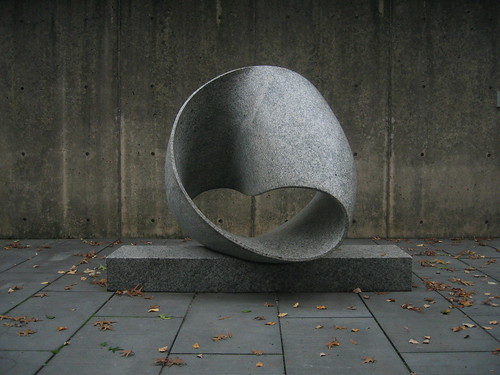If you search for "concrete art" on the web, as I often do, you'll find yourself stumbling across another type of concrete art. I've never been quite sure of what it meant, so I thought I'd investigate it further and come up with a summary.
This other "concrete art" developed in the 1930s in Europe, and was a form of visual art, in particular a form of abstract art. But in this abstract art nothing stood for or represented anything else. Nothing was symbolic; the shapes and colours of the work were simple lines and rectangles, primary colours. Max Bill, a Swiss artist and designer, was part of this movement.
The term came from the first and only issue of a magazine called Art Concret. "There was nothing more concrete or more real than a line, a colour, or a plane (a flat area of colour)." [Quote from www.tate.org.uk] The idea was to create new works of art from simple forms and colours, yet having nothing to do with any symbolic or representational meaning. The strength of the work would be in this simplicity which Art Concret said would "represent abstract thoughts in a sensuous and tangible form."
Concrete art was closely related to constructivism, an earlier movement that tried to reflect the industrial world by constructing art or sculpture through processes similar to what industry might have used. "Constructivism is a purely technical mastery and organisation of materials," said a 1923 manifesto. You can understand how constructivism influenced concrete art in the avoidance of meaning and symbolism.
This image is Max Bill's sculpture, Endless Ribbon, granite, 1953. You can see it's origins in the concrete art and constructivist movements.

1 comment:
I love concrete as an artistic medium. Fabric forming and sculpture with concrete are great.
ConcretePhil.com
Post a Comment